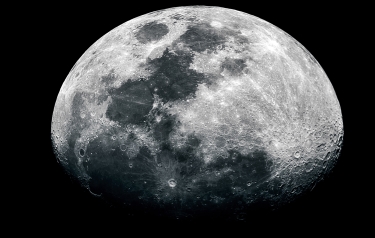17 December 2024
Italy is making significant strides in sustainable lunar exploration through its Selene Project, an initiative spearheaded by the Italian Space Agency (ASI) to develop small nuclear fission reactors capable of powering future Moon settlements.
 Image: Shutterstock
Image: ShutterstockThe project addresses the growing energy demands of planned lunar missions, as NASA, ESA, and other global agencies aim to establish a sustained human presence on the Moon by the 2030s.
The vision behind Selene
Named after the Greek goddess of the Moon, the Selene Project aims to create a robust energy infrastructure, called the Moon Energy Hub (MEnH). This system will rely on compact, highly efficient surface nuclear reactors (SNRs) to generate a stable energy supply.
The harsh lunar environment, characterised by cycles of 14 days of sunlight followed by 14 days of darkness, makes traditional solar and radioisotope-based energy systems impractical for supporting long-term operations.
Angelo Olivieri, Head of Scientific Missions at Italy’s national space agency, ASI, said: “Italy is strongly committed to the exploration of the Moon and the creation of a permanent lunar base.
“Regarding energy supply, the currently available solutions, based on the use of solar energy, do not allow us to achieve the challenging energy goals for future activities on the lunar surface.
“The search for an adequate technological solution represents a field of great interest for ASI.”
Leading Italian collaboration
The three-year project is led by ENEA (Italian National Agency for New Technologies, Energy and Sustainable Economic Development), in partnership with the Polytechnic University of Milan and Thales Alenia Space Italia, with contributions from ENEA research centres across Italy. It is supported by €2 million in funding from ASI.
ENEA will focus on testing advanced technologies for nuclear energy production, including sensor automation and wireless power transmission. The feasibility study also includes developing energy storage systems to ensure operational reliability, even during potential power fluctuations or outages.
“By combining technological innovation, strategic vision, operability, reliability and compactness in an extremely ‘demanding’ environment such as the lunar one, the MEnH aims to become a cornerstone for future space explorations and a point of reference for defining a scenario clear operating and a roadmap to reach it”, said Mariano Tarantino, Head of the ENEA Nuclear Systems Division.
“The coordination of SELENE allows us to confirm the role of ENEA in the nuclear sector for space at national and international level, becoming the glue between the industrial fabric and the world of research engaged in the space sector, a path already started with the ASI-ENEA agreement for the realisation of a first feasibility study for a nuclear reactor to power the moon bases,” he added.
